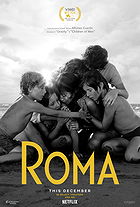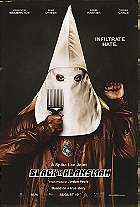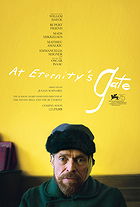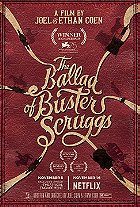Where does one begin a discussion on a Spike Lee joint that draws immediate parallels between its recent history and our immediate present? I suppose you could start there, but BlacKkKlansman has so much going for it that it seems somehow the most obvious entry point. Here is a film that manages to balance its political messaging with comedy, its moments of high-tension with Lee’s imprimatur, and manages to make a commentary about our nation’s stagnant identity with grace and wit.
You really can’t make this shit up, as evidenced by the title card reading “some fo’ real fo’ real shit.” It makes perfect sense that Spike Lee would gravitate towards the true story of Ron Stallworth (John David Washington, a star is born here), a black cop that infiltrated the Klu Klux Klan. On paper that scans as insane enough to be true, no questions asked as no writer has so fervid an imagination as to dream up such a scenario.
This historical story, if 1979 can count as historical, not only entertains us with the sheer insanity of its truth, both as something that can be verified as happening but with its clear lack of artifice, but functions as a gauge for present-day racial tensions. As if we needed further reminding, America’s complicated relationships between racial and ethnic groups has largely stagnated more than we’re comfortable with. For all of the outward looking progress and symbols of hope and change, there was clearly an animosity and backlash festering away and waiting for something to come along and provide clearance for it to explode.
It is within this space that BlacKkKlansman operates best as a document of art responding to history as much as the present. Hell, this could easily be said of so much of Lee’s body of work. Think of how Bamboozled argued that maybe audiences still responded enthusiastically with uncomplicated and stereotypical portraits of black people’s interior lives, and then remember how Green Book just won Best Picture. Once more, Lee’s thorny portrait of an American landscape and identity at war with itself loses to the feel good movie that places its major black character as a supporting role and makes them function as a tool for the white character’s learning that racism is bad and maybe we’re more alike than we aren’t.
Then there’s the way in which Lee opens the film, with Alec Baldwin in a cameo delivering a monologue directly to the camera. Baldwin’s cameo, not dissimilar to his opening salvo in Glengarry Glen Ross, introduces us to the world of white angst that seers anyone unlike them as inherently inferior and deserving of violent retribution. It’s pure fear-mongering, and something of a stunt cast as Baldwin’s spent the better part of his time post-2016 election planning a rambling, divisive bigoted dotard every week on SNL. Lee’s choices are smart and piercing.
To go back to Bamboozled for a second – that was a film that received a tremendous amount of criticism for its use of historical cinematic tropes and images that left a lasting legacy of violence and oppression. Many thought his satirical intent was undermined by deploying these tropes and images, but Lee was making a great point. Images and symbols matter. It’s easy to see various groups as “the other” if all you know about them is happy slaves, mammies, and lazy simpletons.
Look at the KKK induction ceremony scene late in this film for proof of this point. After the proxy (Adam Driver, playing a Jewish man continually creating and destroying various identities) has completed his ceremonial joining by, in my opinion, desecrating the actual tenants of Christianity and their symbols in the Eucharist, they all convene to watch The Birth of a Nation. D. W. Griffith’s film is one that is a loaded subject – do you talk about it as a important historical document for all it accomplished on a technical level? Do you remove it from the canon for its aggressive racism and dangerous stereotypes, including blackface and images of sex crazed black men? Do you leave it and discuss as the controversial, thorny thing it is? There’s no right answer here, but it is important to remember that the Klan really does treat that cinematic text as a near-holy gospel as depicted here. (For the record, I refused to watch it after learning that last little tidbit.)
Lee knows that there’s no way to tell this story without drawing parallels with the present, so why even hide from the fact? We end the film with a montage of violence in Charlottesville and an upside down American flag that slowly drains out of color. His pessimistic view of race relations is earned as it does appear that we’re backsliding and everyone’s on the defensive instead of paying attention and listening. BlacKkKlansman doesn’t offer any balm for these scars the way that Green Book does, and it’s a superior work of art for it.
 Login
Login
 Home
Home 95 Lists
95 Lists 1531 Reviews
1531 Reviews Collections
Collections
 0 comments,
0 comments, 







